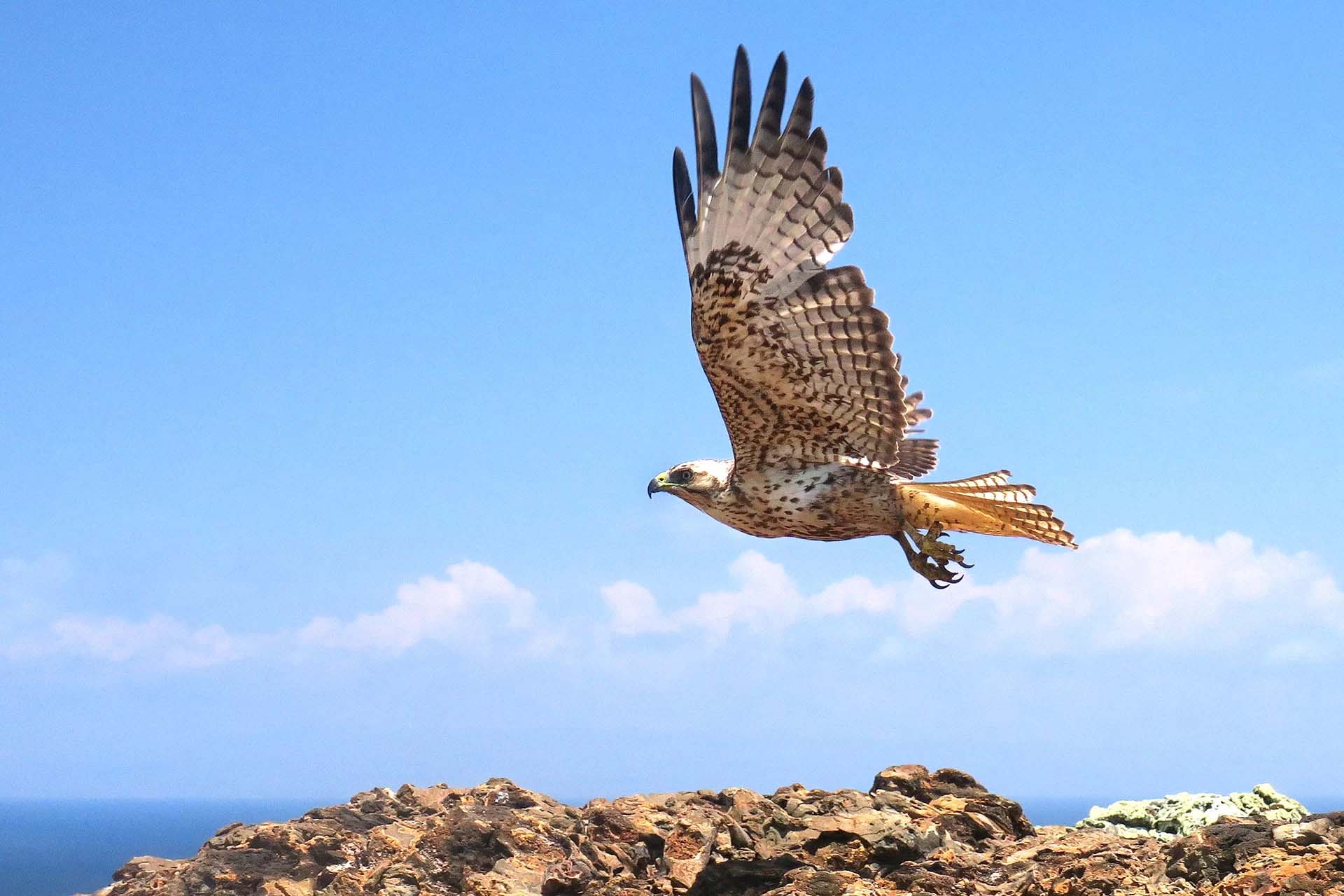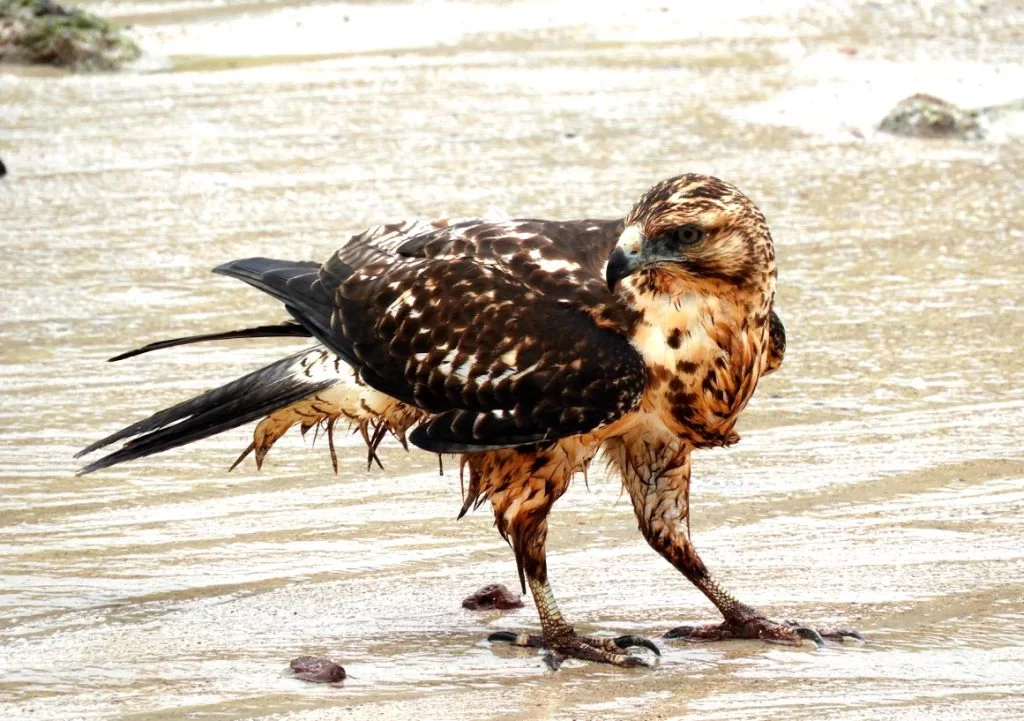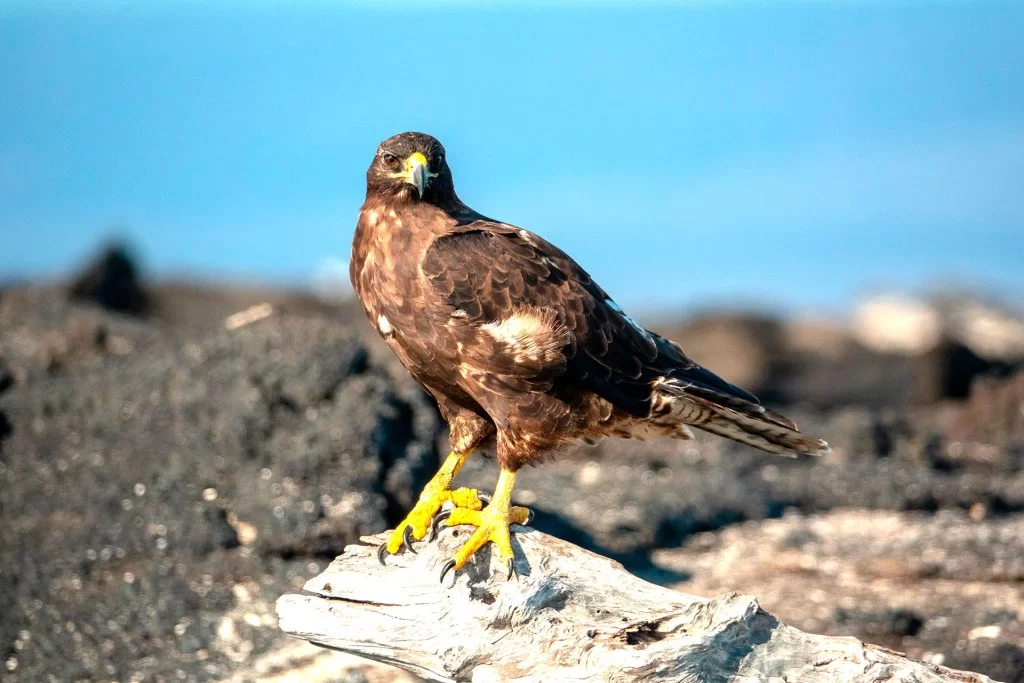The Galapagos Hawk – A Symbol of Survival and Strength in the Enchanted Islands
Habitat and Description
Once common on most of the main islands in the archipelago, the Galapagos Hawk’s population has declined dramatically, leading to the extinction of this species on San Cristobal Island and Floreana. The majestic hawk can still be found on the islands of Santa Cruz, Fernandina and Santa Fe. It also flies over Isabela, Santa Cruz Islands, Pinta Islands, Marchena Islands, Pinzon Islands, and Santiago Islands. Isabela is the largest of these islands and offers the hawk relative tranquility and solitude.
Predation and Diet
The Galapagos Hawk prefers coastal areas and highlands with dry climates. Its diet is primarily made up of small seabirds, rodents, and lizards. The Galapagos Hawk is also the only natural predator of marine Iguanas. The majestic hawk soars over iguana colony, making the curious creatures stampede with fear. It’s a fascinating dance between predator and prey.
Conservation Status
While the Galapagos Hawk population is considered stable at approximately 150 breeding pairs, it faces threats that may compromise its survival. The main threats to these apex prey are the human impact on habitats, and competition from introduced species for food. The International Union for Conservation of Nature’s (IUCN) Red List classifies these birds as “Vulnerable”. To protect these iconic birds and their habitats, it is vital to act decisively.

Exploring the Diverse Habitats of the Galápagos Hawk: From Shoreline to Mountain Peaks © Franca Borio
We need to implement conservation measures that are essential for the Galapagos Hawk, and the ecosystem dynamics of this paradise. This includes conducting updated estimates of hawk population in Galapagos, analyzing their dynamics and structure to detect any signs of decline. In addition, it is important to assess the impact of threats on Galapagos Hawks, and also study the loss in genetic diversity.
Conservation for Future Generations
The Galapagos Hawk is a symbol for strength and survival on the Enchanted Islands. Its beauty and resilience captivates observers. It is our responsibility as guardians to protect these magnificent birds and to work together to conserve Galapagos’ natural heritage. We can preserve these endemic species and their habitats for future generations by taking action to protect them. For the survival of this ecosystem and its people, we must work together to promote the harmonious coexistence between humanity and nature.

Capturing the Majestic Galápagos Hawk (Buteo galapagoensis), Listed as Vulnerable on The IUCN Red List © Marty Sinkewich



